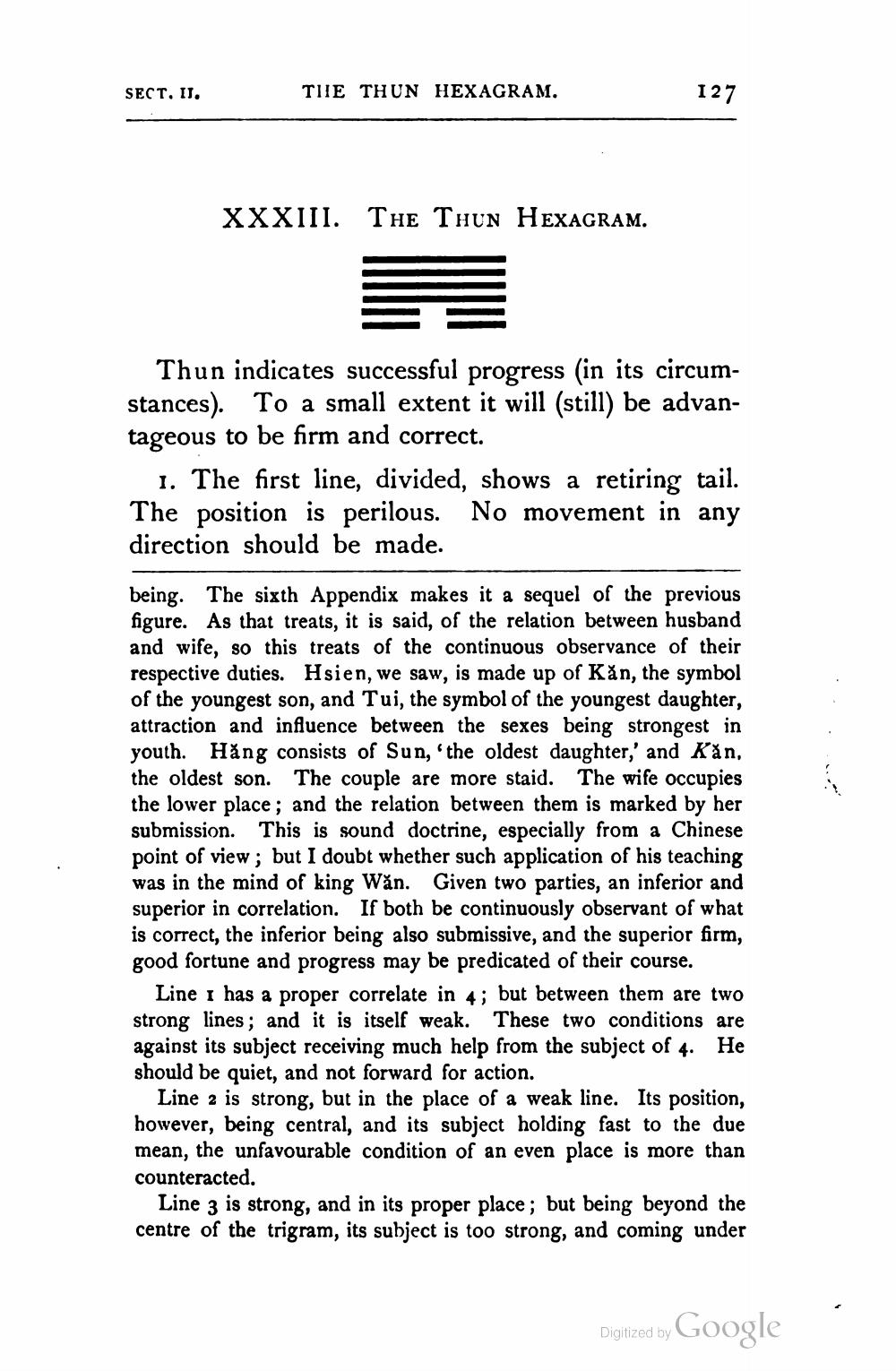________________
SECT. II.
THE THUN HEXAGRAM.
XXXIII. THE THUN HEXAGRAM.
127
Thun indicates successful progress (in its circumstances). To a small extent it will (still) be advantageous to be firm and correct.
1. The first line, divided, shows a retiring tail. The position is perilous. No movement in any direction should be made.
being. The sixth Appendix makes it a sequel of the previous figure. As that treats, it is said, of the relation between husband and wife, so this treats of the continuous observance of their respective duties. Hsien, we saw, is made up of Kăn, the symbol of the youngest son, and Tui, the symbol of the youngest daughter, attraction and influence between the sexes being strongest in youth. Hǎng consists of Sun, 'the oldest daughter,' and Kăn, the oldest son. The couple are more staid. The wife occupies the lower place; and the relation between them is marked by her submission. This is sound doctrine, especially from a Chinese point of view; but I doubt whether such application of his teaching was in the mind of king Wăn. Given two parties, an inferior and superior in correlation. If both be continuously observant of what is correct, the inferior being also submissive, and the superior firm, good fortune and progress may be predicated of their course.
Line I has a proper correlate in 4; but between them are two strong lines; and it is itself weak. These two conditions are against its subject receiving much help from the subject of 4. He should be quiet, and not forward for action.
Line 2 is strong, but in the place of a weak line. Its position, however, being central, and its subject holding fast to the due mean, the unfavourable condition of an even place is more than counteracted.
Line 3 is strong, and in its proper place; but being beyond the centre of the trigram, its subject is too strong, and coming under
Digitized by
Google




